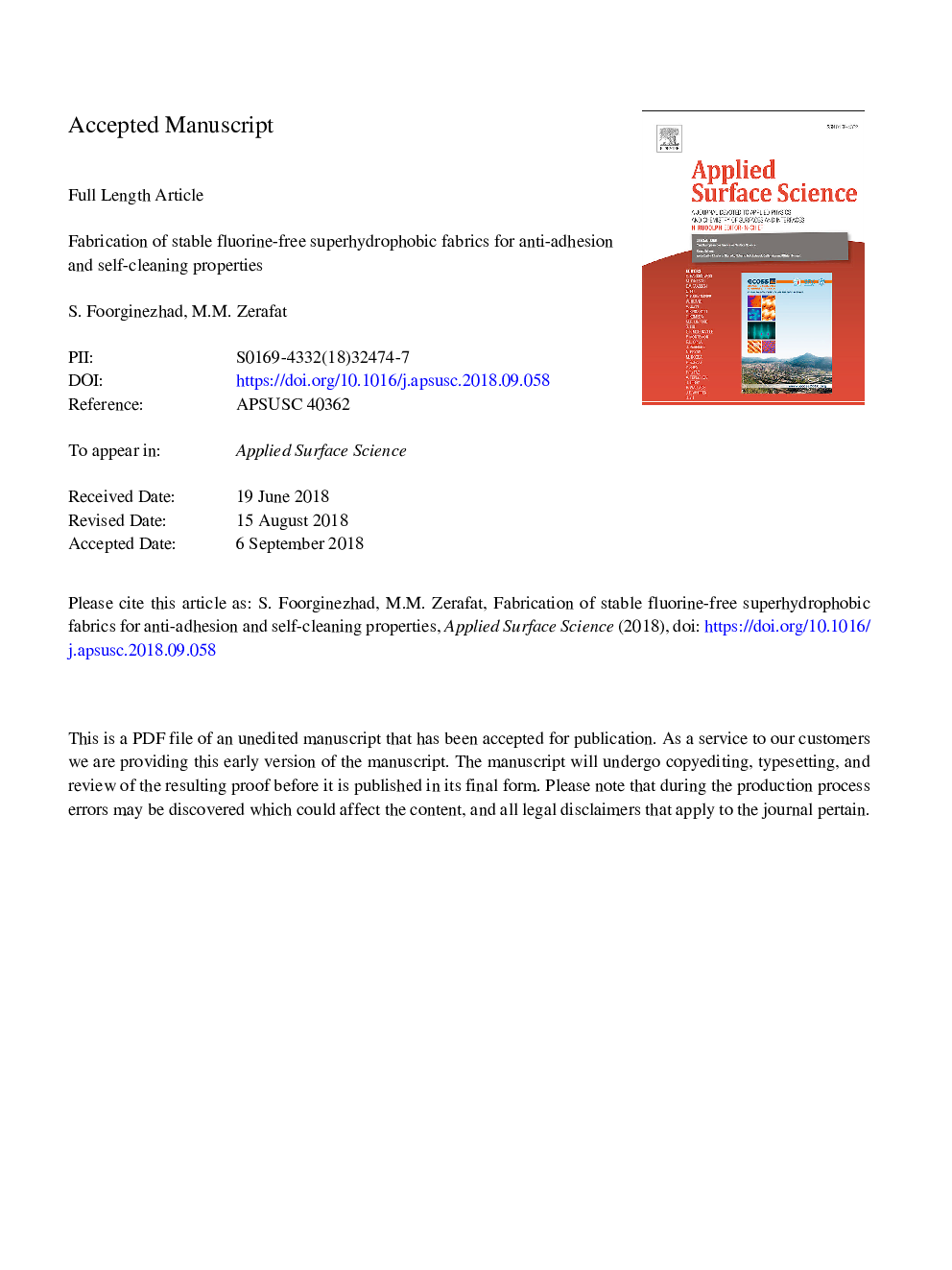| Article ID | Journal | Published Year | Pages | File Type |
|---|---|---|---|---|
| 9951521 | Applied Surface Science | 2019 | 42 Pages |
Abstract
This study is aimed at the fabrication of superhydrophobic fluorine-free films on cotton fabrics through incorporating a rough sub-structure followed by chemical modification. Stable titania hydrosols were prepared via sol-gel using 0.44â¯mol/L titanium tetraisopropoxide in acidic media followed by chemical modification of the sol using vinyltrimethoxysilane (VTMS) for surface energy reduction and spraying over the surface. Upon drying at 60â¯Â°C, covalent attachment of vinyl modified TiO2 particles to hydrophilic surface was occurred. Water contact angle increased from 0° on pure fabric up to 134.1° with sliding angles >90°. Further enhancement in water contact angles up to â¼170° and reduction of sliding angle to <10° was achieved by introduction of polydimethylsiloxane (PDMS). Hydrodynamic particle size of TiO2 sol was determined using dynamic light scattering (DLS). Scanning electron microscopy (SEM), energy dispersive X-ray (EDX) and Attenuated total reflectance-Fourier Transform Infra-Red (ATR-FTIR) analyses were conducted to verify the morphology and rough structure, elemental analysis and surface chemical modification of treated surfaces, respectively. Furthermore, the superhydrophobic coating was applied on a commercial sponge for oil-water separation. According to the results, self-cleaning, anti-adhesion, chemical resistant and durable super-hydrophobic fabric was prepared through spraying of low-cost environmentally friendly materials.
Related Topics
Physical Sciences and Engineering
Chemistry
Physical and Theoretical Chemistry
Authors
S. Foorginezhad, M.M. Zerafat,
